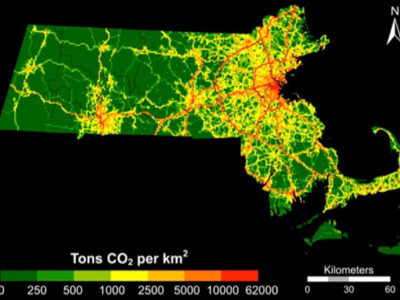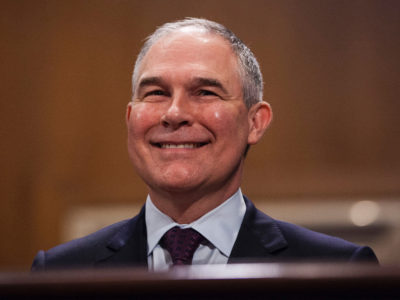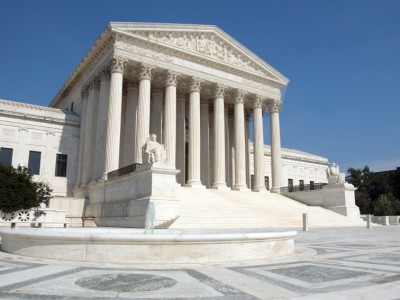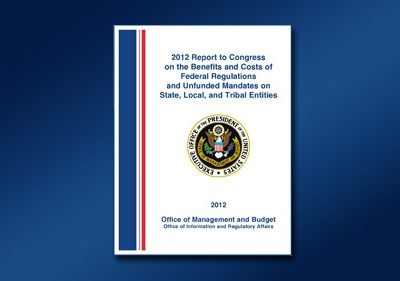judicial review
News Flash: 10th Cir. Rebukes Government Over Coal Leases
Today’s important ruling on standing, public lands, and climate change
In an important ruling this morning, the Tenth Circuit rejected the government’s assertion that it could ignore carbon emissions tied to renewing coal leases. In WildEarth Guardians v. BLM, the court also rejected the mining company’s attack on the standing of environmental groups to raise this claim.The mines in question are in the Powder River …
Continue reading “News Flash: 10th Cir. Rebukes Government Over Coal Leases”
CONTINUE READINGClimate Policy in the Bay State
With a nudge from its courts, Massachusetts is pushing back against Trump’s climate agenda.
Even in 2006, it was clear that climate change is a serious threat to Massachusetts. That year, in its path-breaking decision on climate change, the Supreme Court gave Massachusetts standing to challenge the Bush Administration’s refusal to regulate greenhouse gases. The basis for standing was impact of sea level rise on the state. It now …
Continue reading “Climate Policy in the Bay State”
CONTINUE READINGPushing Back Against Presidential Power
It’s time to rethink the amount of power presidents have claimed over regulatory policy.
If there was ever a time to think hard about presidential power, that time is now. That’s a very broad question, but the part most relevant for this blog is the President’s role in controlling government regulation. There is no question that presidents have and will continue to have a huge influence on regulatory policy. …
Continue reading “Pushing Back Against Presidential Power”
CONTINUE READINGA Case of Administrative Bad Faith
The D.C. Circuit slaps down an abuse of power by Trump’s EPA.
On Monday, the D.C. Circuit dealt a setback to Scott Pruitt’s deregulation efforts in Clean Air Council v. EPA. The case involved a tricky procedural issue. But the substance was simple: EPA, under Pruitt, had abused a reconsideration procedure under the Clean Air Act to stay a regulation for 90 days, when it had no …
Continue reading “A Case of Administrative Bad Faith”
CONTINUE READINGA Yawning Credibility Gap
Courts are supposed to defer to agencies. But that happens less often when an agency lacks credibility.
Two themes in the Trump Administration are distrust of experts and a willingness to overrule them on ideological grounds. But undermining the government’s claims to expertise may come back to haunt the Administration. Because Trump is marginalizing government scientific and economic expertise, his regulatory initiatives may get less deference from the courts. There is already a great deal of concern …
Continue reading “A Yawning Credibility Gap”
CONTINUE READINGTurnabout is Fair Play
The same tools that have been used to stymie the Obama Administration can be turned against Trump.
Conservatives and industry have perfected some legal tools to block regulation by the Obama Administration. Those tools can be turned against them, by using the same tools to block anti-regulatory moves by the Trump Administration. As a professor, I don’t necessarily agree with all of them. But as a lawyer, I wouldn’t hesitate to use them …
Continue reading “Turnabout is Fair Play”
CONTINUE READINGReviewing the REVIEW Act
This bill is in the running for the all-time “lame legislation” prize.
You can tell right away that this bill — passed by the House only yesterday — is a really clunker. The title is Require Evaluation Before Implementing Executive Wishlists Act of 2016. Really, that’s the best they could come up with? But it only gets worse. The bill provides that no “high-impact rule” can go …
Continue reading “Reviewing the REVIEW Act”
CONTINUE READINGThe Slow Pace of Rulemaking
Rulemakings take a long time. We don’t really know what causes the delays.
A recent study by Public Citizen reports that it takes about 2.5 years to issue an economically significant rule, starting from the time the rule is first listed in the regulatory agenda. There are major differences between agencies – an economically significant rule takes EPA almost four years, rather than the 2.5 years needed by …
Continue reading “The Slow Pace of Rulemaking”
CONTINUE READINGUARG Strikes Back
Will UARG Persuade the Supreme Court to Overturn New Air Quality Standards?
“UARG” sounds like the name of a monster in a children’s book or maybe some kind of strangled exclamation. But it actually stands for Utility Air Regulatory Group, which represents utility companies in litigation. UARG did well in two important Supreme Court cases last year, winning part of the case it brought against EPA climate change …
Continue reading “UARG Strikes Back”
CONTINUE READINGThe Lost World of Administrative Law
The regulatory process has become more opaque and less accountable. We need to fix that.
Every year, thousands of law students take a course in administrative law. It’s a great course, and we wish even more students took it. But there’s a risk that students may come away with a vision of the regulatory process that is increasingly disconnected with reality. Worse, the leading judicial opinions on the subject suggest …
Continue reading “The Lost World of Administrative Law”
CONTINUE READING











